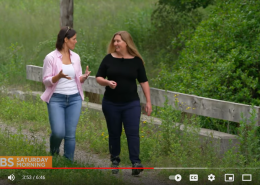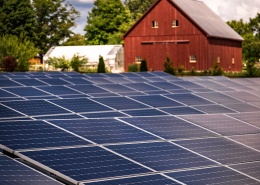
Growing Green Brings Agrivoltaics to Community Gardens in Arizona
Written for the AgriSolar Clearinghouse by Sarah Bendok, Growing Green
I am a rising sophomore at Phoenix Country Day School. Since I was young, I have always loved gardening. Every summer, I visit my grandma's village and work…

CBS ‘Saturday Morning’ Features AgriSolar
CBS Saturday Morning featured NCAT’s AgriSolar Clearinghouse and one of the farmers who is partnering with an energy company to graze his sheep among their solar panels during a six-minute piece that aired nationwide.
Pairing farming with…
 https://www.agrisolarclearinghouse.org/wp-content/uploads/2023/07/olive-trees-in-agroforestry-1.jpg
270
360
NCAT IT
https://www.agrisolarclearinghouse.org/wp-content/uploads/2022/02/AgriSolar_stacked_1-338x400.png
NCAT IT2023-07-10 10:37:452023-07-10 10:54:55Agroforestry and Agrivoltaics: Two Appropriate Technologies for Smart Shade on Farms
https://www.agrisolarclearinghouse.org/wp-content/uploads/2023/07/olive-trees-in-agroforestry-1.jpg
270
360
NCAT IT
https://www.agrisolarclearinghouse.org/wp-content/uploads/2022/02/AgriSolar_stacked_1-338x400.png
NCAT IT2023-07-10 10:37:452023-07-10 10:54:55Agroforestry and Agrivoltaics: Two Appropriate Technologies for Smart Shade on Farms
Enabling Real-Time Monitoring of Environmental Conditions and Soil Health Through the Use of Standalone Photovoltaics and Off-the-Shelf Systems
Written for the AgriSolar Clearinghouse by Ridge to Reefs staff Phal Mantha and Paul Sturm
Agricultural operations, land management, and environmental projects all have a strong need for consistent monitoring and recording of field conditions…

How Will ESG Requirements Influence Agricultural Photovoltaics?
Sunstall's Sunzaun product installed on a winery.
By Helge Biernath, Sunstall Inc.
I just attended the 2023 Solar Farm Summit, where I presented and spoke to the experts in the industry. One topic never came up: How will ESG (environmental,…

A Fresh Look at Dual-use Solar in the Pacific Northwest
by Emily Griffith of Renewable NorthWest
Renewable Northwest and a small workgroup are preparing an update to the 2019 report, Dual-Use Solar in the Pacific Northwest: A Way Forward, in response to the changing landscape of agrivoltaics…
Elevated Solar Trackers Offer a Compatible and High-efficiency Agrisolar Solution for Farmers and Ranchers
Cows on a pasture with elevated Stracker dual-axis solar trackers.
By Brigitta Banki and Kate Lundquist, Stracker Solar
Farmers and ranchers all over the United States are increasingly interested in taking part in solar energy initiatives.…

SURVEY: University of Illinois Study on the Economics of Solar Grazing
Sheep grazing around solar panels. Photo: Agrisolar Clearinghouse.
By Tyler Swanson and Quin Karhoff
The Bock Agricultural Law and Policy Program at the University of Illinois, Urbana Champaign is conducting a study supported by the National…
RUTE SunTracker Demonstrates Cattle-grade Agrivoltaics in Oregon
By David McFeeters-Krone, RUTE Foundation Systems, Inc.
Solar development is exploding around the country. The Inflation Reduction Act incentives have exacerbated this trend such that the next 10 years will lead to solar developments…

The Illinois Agrivoltaics Regulatory and Policy Guide Analyzes State and Local Laws
Sheep grazing under solar panels.
By Jessica Guarino and Tyler Swanson
The U.S. agrivoltaics industry continues to grow as the desire to pair solar energy production land uses with pollinator habitats, livestock grazing, and…
